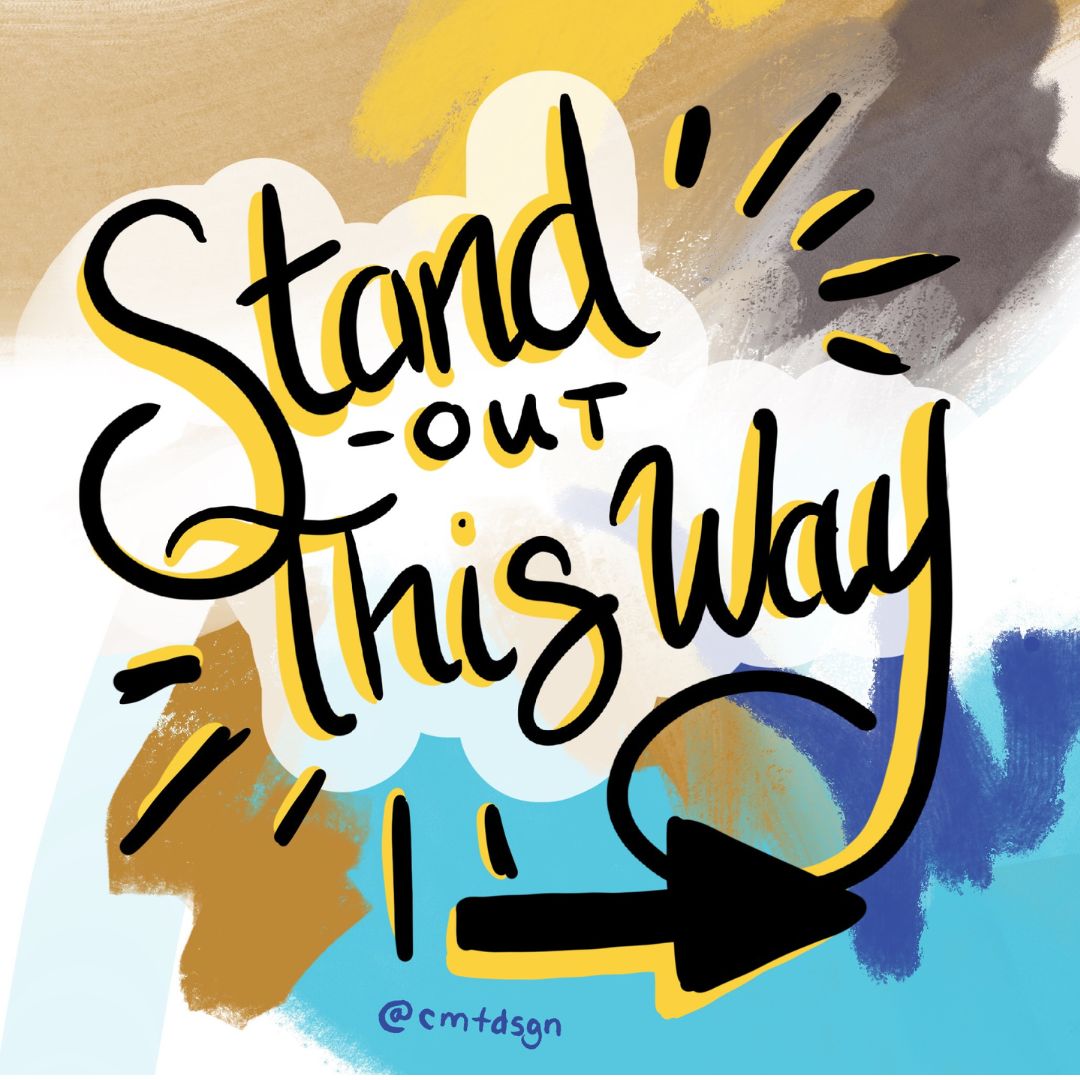I always hear these questions from art therapists.
How do to stand out?
What do I have to do to feel heard?
It all seems overwhelming because there are already too many art therapists.
I feel that I will blend in.
I get this a lot from art therapists.
I felt the same way when starting as a graphic designer because the market is saturated and overwhelming.
The design industry has come a long way reaching new heights where design and art are becoming a commodity. There is pressure to set myself apart and challenge AI technology. My personality is where I need to focus my energy to stand out.
To art therapists just coming out of school and trying to find themselves and how to enter the market. You have learned all of these theories, and methodologies and had the chance to experiment with them.
Those experiences are something to cherish that are going to help you build the blocks you need to get started. Entering the market is the big challenge of being an art therapist because the school does not teach you this.
I heard art therapists feel trapped and limited in what they can do in agencies. They want to be free from those constraints and do their own thing because they feel devalued in the industry. I completely understand because it’s the same for graphic designers, feeling limited and devalued in corporate jobs. When we are doing our own thing we can be flexible and far more impactful.
Branching off into private practice for yourself is empowering. You have the flexibility and freedom to set your schedule and offer whatever you wish. Now there are factors to be aware of and be very cautious about when entering the market as a private practice art therapist.
The market is inundated with talented art therapists who have countless different modalities, different approaches, and personalities. Given the fact others are doing the same thing as you, you feel unsure about going this route.
How are you going to break the ice?
How will you become the go-to art therapist and be known as the expert in your market?
There will always be high competition.
Get this out of the head.
Set this aside, it’s time to shift your mindset about how you can enter the market from a different perspective or different angle.
I will share with you a few ways to approach this because I do not want you to feel overwhelmed when entering the mental health industry.
I know I did when starting, but it was because I did not make time to do the inner work.
The way to approach this situation and prevent feeling overwhelmed when trying to stand out now is to do the inside-out approach. Build the foundation to eliminate the feeling of a small fish in a big ocean.
Once you know yourself, you will see the gap in the world that you can fill.
You will know where you belong in this world you will not feel lost after I share these few ways.
You can dive deeper into what sets you apart. I am sure you are just getting out of school or out of a corporate job. These things take away from spending time with yourself and knowing who you are, and it’s important to slow down to revisit yourself.
I did this during the pandemic it was the best thing I have ever done for myself. This is an act of self-care to self-discover yourself again.
It brought me here today and helped me position myself because I took that time to learn about myself. I was on the conveyor belt for so long! No time to do anything; mind and body had enough!
I was going through life on a conveyor belt; it was too overwhelming. I was so tired, and I am sure you feel the same way.
I would love to share these four ways to dive deeper into what sets you apart, but I would like to share what is a unique value proposition.
The unique value proposition is all about your superpower. What do you bring to the table, and what is unique about you and maybe that no one else has?
The unique value proposition helps you to niche and to be known for something, especially if you are a private practice art therapist. You will be communicating your value and offer daily because it’s a positioning statement. It tells people what you are here to do and who you help.
You have to make sure that this is clear and that you are clear with what you bring to the table because this is what you will be putting in all your communication.
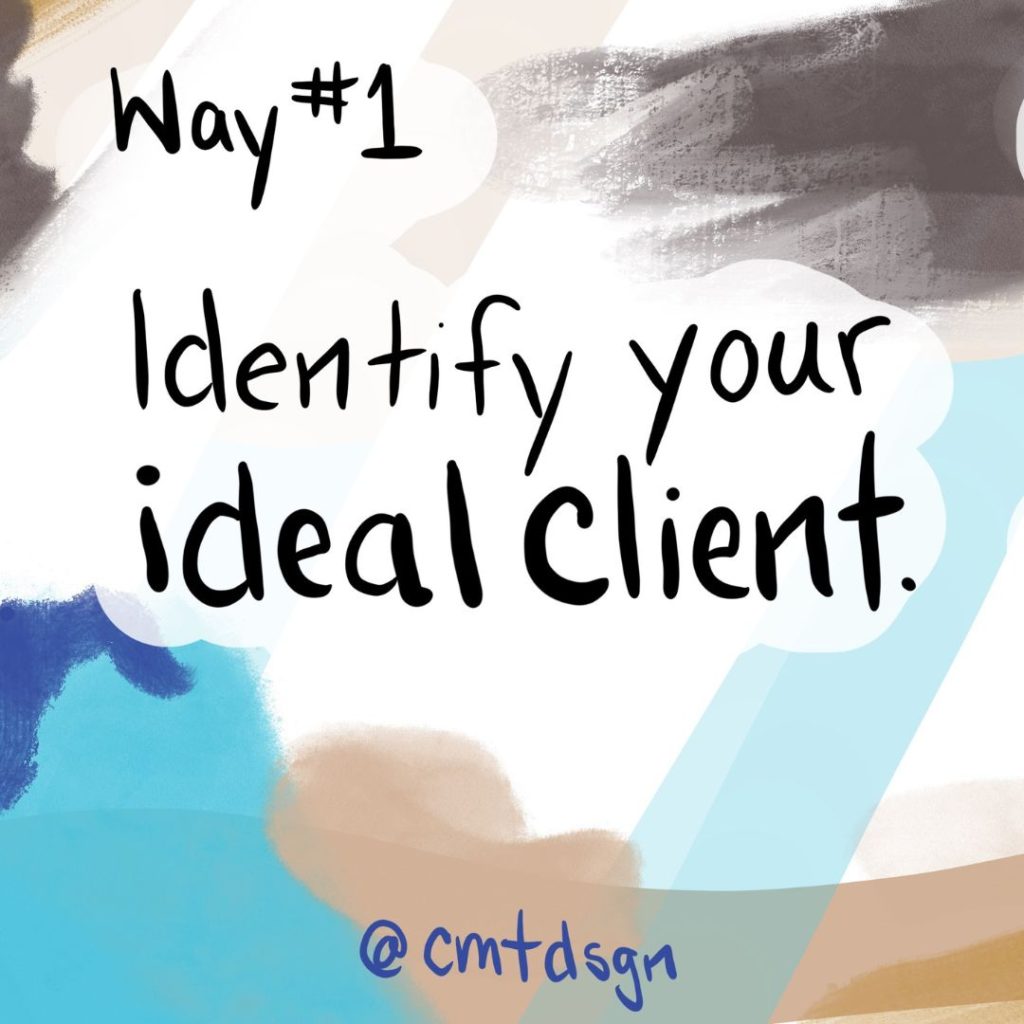
Way #1: Identify your ideal client
Getting clear on your ideal client it’s one of the first ways to get into niching. You want to understand the type of people you work best with and be sure it’s a small group. It will be easy to market to them when it’s time.
To find out who your ideal client is, look at your current network of people you communicate with daily. If you already have a client base, look through your client list and see who pops out at you. The ones you had the best opportunities or the best connections with because that might give you a clue in terms of who is for you. That way it requires less of your energy.
Another way to dig deep here is to understand who you are attracted to through interest. For example, I like art and psychology. I desired to be an art therapist back in college. Now, it makes sense to work alongside art therapists and become the bridge of connection and communication between therapists and healing seekers and support them. It was a great way to integrate what I love into my career through a different lens.
It plays off of the alternative form of me in the job market, and you can do this too. Find ways to support the things you desire through your work.
Here are some self-reflection prompts:
The way to identify your ideal client is to ask yourself the following questions:
Who do I get along with well within my network of people?
Do I have a favourite client that I enjoy working with wholeheartedly?
Describe them in a sentence, highlighting their main pain point, plus their needs and desires. That is a great way to find your ideal client.
Once you find that ideal client, you will see how easy it is to create offers, create content, and market to them by using their language. It’s going to be effortless.
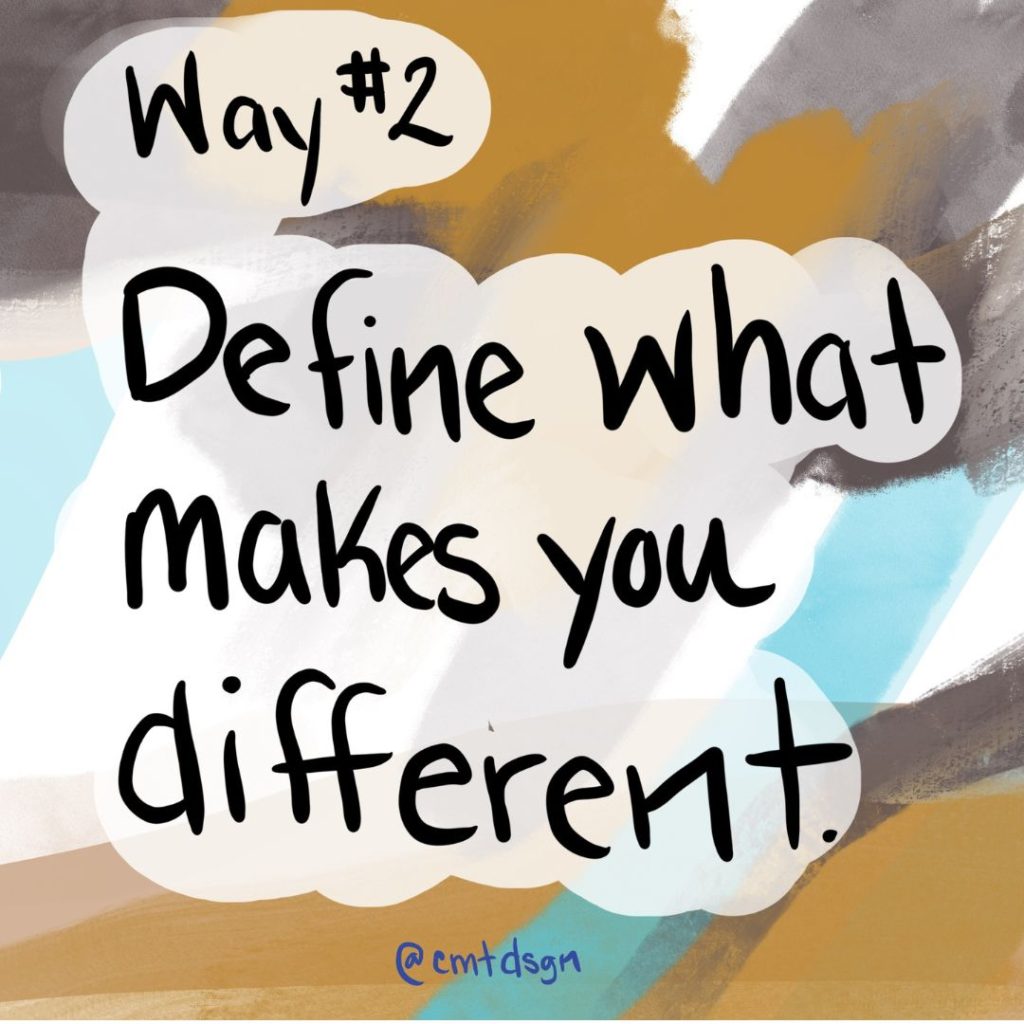
Way #2: Define what makes you different
Not many of us took time to sit with ourselves and learn about what makes us different.
What makes us stand out?
What stories or experiences can I harness and utilize through my business?
There are many different aspects to use within ourselves because this is personal. You take time to learn about yourself and to get clear on who you are as a person, you will see how effortless it will be to market yourself and sell yourself.
It’s coming from the inside out; you are not trying to put on a mask or shift your mindset to reach a person.
Start with analyzing your past stories and experiences.
What have you faced in life?
What are some challenges that were in your way at a young age?
Did you experience some mental trauma or did you experience a mental breakthrough?
Did you experience a challenge as a child, and how did you learn from it?
Did you experience your best friend going through a mental illness?
These are great stories that your ideal client would love to hear and relate to and want to connect with you. Pull from those types of feelings and stories because that is what attracts them to you. Focus on stories and experiences that harness a message to get your ideal client to feel an emotional response. They should be connected or related to your offer because the stories will back you up in what you offer, how it will help the client, and what results you will bring.
Another way to tap into what makes you different is by looking at your personality traits. You can first approach this intuitively, but if you need guidance, there is a great tool called the Myers-Briggs Test. Its free online test helps to unlock your traits and see which one resonates the best, and use them for your business because there are so many different art therapists. Not many of them share the same traits. Utilize this, do not be afraid to show your personality, and see how you can stand out that way.
Enneagram is a personality test not 100% free, its another tool to for self-discovery. It gives you more insight into how to stand out. Whenever you feel stuck, remind yourself that your personality is your power. You have a different personality, characteristics, and ways of communicating. This is a big part of what sets you apart is knowing yourself.
Another thing that you can do is look at your strengths, you can pull from this and use it as your superpower for setting yourself apart. Another great way to understand your strengths, is to ask your friends, family, co-workers, colleagues, and past professors because they know you best. If you are having trouble seeing your qualities, the need for an outer perspective is helpful. This individual can provide you with insight through another lens on the type of person you are and help bring underlinings to the surface. Maybe you have great charisma that you ignored for some time to keep yourself professional. Now, you realize you need charisma to stand out and be noticed!
People will be attracted to your charisma.
In terms of what makes you different, those are the pieces that you need to focus on. Look at your story, past experiences, personality traits, and strengths.

Here are tools that you can use to find out a little bit more about yourself.

Myers-Briggs test
The Myers-Briggs Type Indicator (MBTI) holds sixteen different personalities that you will be classified as. It’s a popular personality assessment to help build a framework around the type of art therapist you are to the world. The reading looks that identity in four dimensions:
- Extraversion (E) vs. Introversion (I): This dimension reflects an individual’s orientation towards the external world. Extraverts tend to be outgoing, sociable, and enjoy interacting with others, while introverts prefer solitude, reflection, and require time to recharge after social interactions.
- Sensing (S) vs. Intuition (N): This dimension reflects an individual’s preference for how they perceive information. Those who score high on the sensing scale are detail-oriented and rely on concrete facts and information, while those who score high on intuition are imaginative and prefer to work with abstract concepts and ideas.
- Thinking (T) vs. Feeling (F): This dimension reflects an individual’s preferred approach to decision-making. Thinkers are logical, analytical, and tend to rely on reason and data to make decisions, while feelers prioritize empathy, personal values, and emotions when making decisions.
- Judging (J) vs. Perceiving (P): This dimension reflects an individual’s preference for how they deal with the outside world. Those who score high on judging prefer to plan and organize their environment, while those who score high on perceiving are more adaptable and prefer to be spontaneous.
The Myers-Briggs assessment consists of a sixty questions that ask individuals to indicate their preferences on each of the four dimensions.
Based on their answers, individuals are assigned a four-letter personality type:
ESTJ
ENTJ
ESFJ
ENFJ
ISTJ
ISFJ
INTJ
INFJ
ESTP
ESFP
ENTP
ENFP
ISTP
ISFP
INTP
INFP
These types can be used to understand an individual’s strengths, weaknesses, and preferred communication styles, among other things.
Here is the link to try out the test. It’s free!
https://www.16personalities.com/free-personality-test
They give you a breakdown of the following:
Strengths
Weaknesses
Personality Traits
Introversion vs Extraversion
Working with others
Type of Careers
It’s a very thorough test but it gives you enough that you can take with you and apply to your business and brand.

Ask your connections
The next tool is to ask your family, friends, your past professors, and co-workers who are great people to talk to and get an outside view of yourself because they might see something that you don’t see. This can help close the gap in areas that you’re unsure about and those people will give you honest opinions too about yourself. If you don’t have good connections that’s okay too because there are other tests out there that you could try.
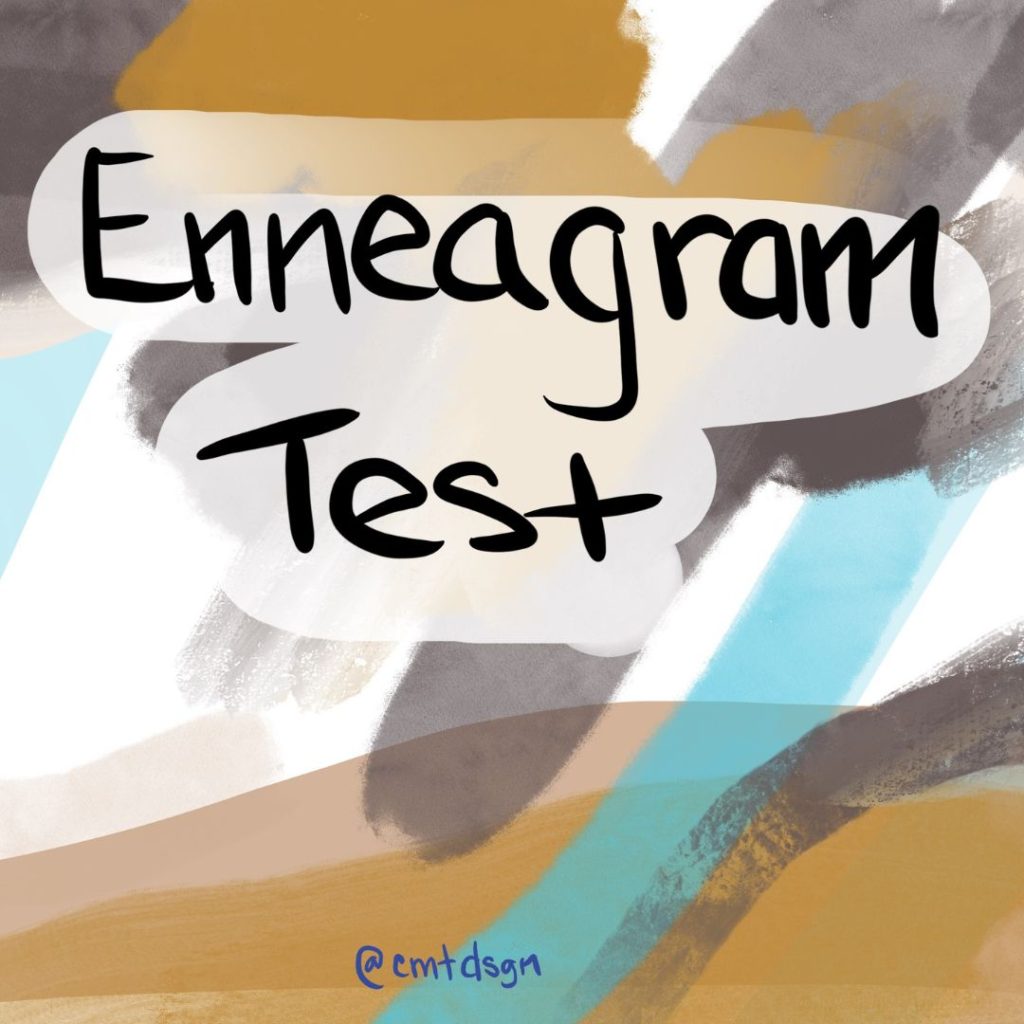
Enneagram
The Enneagram is a personality system that seeks to understand your core motivations, fears, and desires. It consists of nine interconnected personality types, each of which has a unique set of traits and characteristics.
Each Enneagram type covers fear, desire, and a dominant emotional habit. These fears, desires, and habits are to shape your thoughts, feelings, and behaviours, leading them to develop specific coping mechanisms and ways of interacting with the world.
The nine Enneagram types are:
- The Reformer: Principled, purposeful, self-controlled, and perfectionistic
- The Helper: Warm, caring, nurturing, and supportive
- The Achiever: Ambitious, driven, adaptable, and image-conscious
- The Individualist: Sensitive, introspective, creative, and moody
- The Investigator: Analytical, insightful, objective, and private
- The Loyalist: Committed, responsible, reliable, and anxious
- The Enthusiast: Fun-loving, adventurous, spontaneous, and distractible
- The Challenger: Self-confident, assertive, powerful, and confrontational
- The Peacemaker: Easygoing, receptive, reassuring, and complacent
The Enneagram is a good tool for personal growth and self-awareness, as it can help you better understand your strengths, weaknesses, and motivations.
Here is the link to the Enneagram, and this one is free with limitations.
Try out the Enneagram test
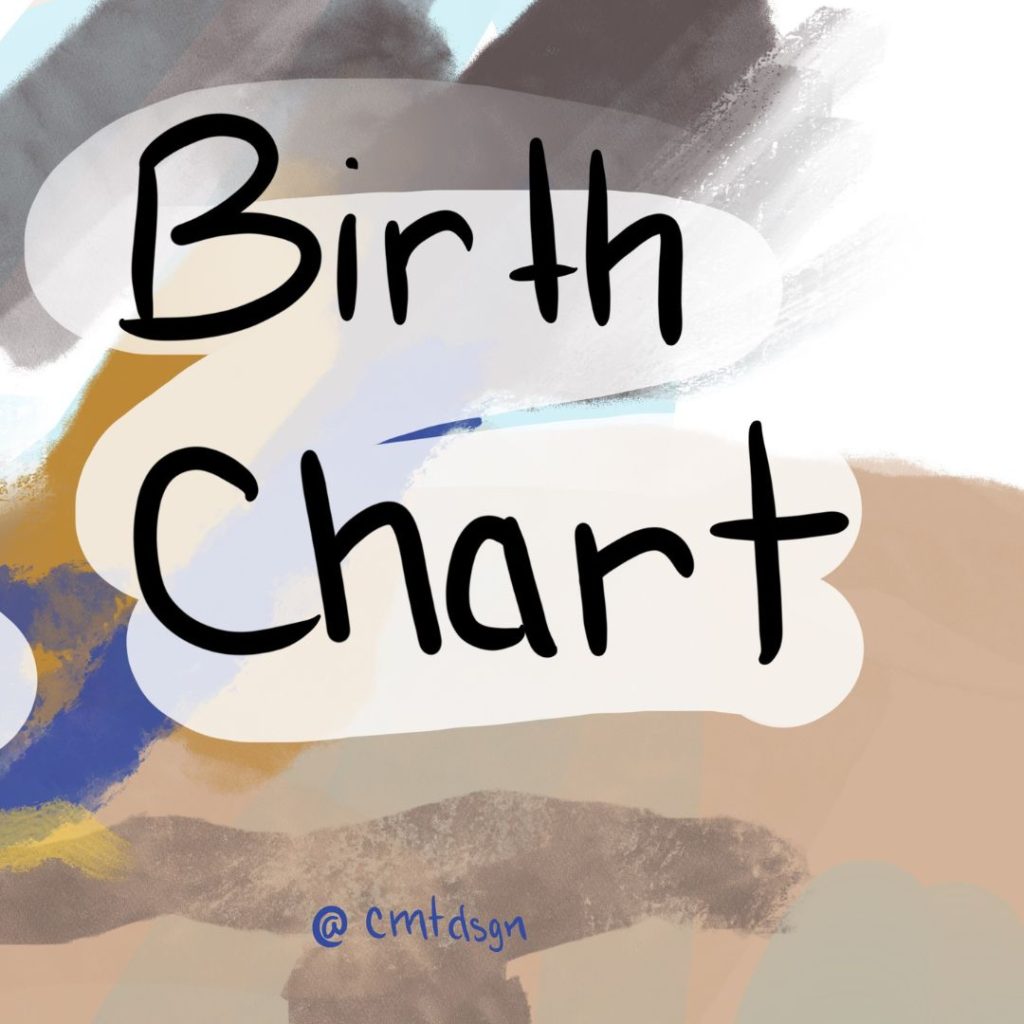
Birth Chart
The last one that I would like to share is the birth chart this one is out there, but I found that this birth chart tapped into you who I am as a person. No one’s birth chart is the same.
A birth chart is a map of the sky at the moment of your birth. It is used in astrology to interpret the placement of celestial bodies at the time of your birth and to gain insight into your personality traits, life path, and potential future experiences.
The birth chart includes the position of the Sun, Moon, planets, and other celestial bodies at the moment of your birth. These positions are plotted on a circle chart, with the twelve zodiac signs and twelve astrological houses marked around the circumference. The positions of these celestial bodies in relation to the zodiac signs and houses are believed to hold specific meanings and influences on your life.
Interpret the birth chart by analyzing the relationships and placements in different astrological houses and signs. Use this information to gain insight into an your personality, talents, strengths, weaknesses, and potential challenges. Birth charts can be used to predict future trends and events in your life based on the movements of the planets and other celestial bodies.
You have your birth chart and this can give you a little bit more detail about some stories that connect to you. I discovered through the birth chart; I had issues with communication back in the day. I connected stories from my past that prove that I had trouble with communication and how I corrected that to where I am now today. The birth chart gives you underlining things that maybe you missed. It doesn’t go into much detail about personality traits or strengths, but it plays with the horoscopes and planets. You can get an understanding of some connections that you hold. These special connections you can bring to the surface as a superpower or something that sets you apart. As I said, a story that maybe you can bring to the table so there are different ways to use this but the birth chart pulls from astrology and the stars. As a human, you can create uniqueness through the birth chart. These findings can help you in your business.
Get your birth chart reading here.
https://horoscopes.astro-seek.com/birth-chart-horoscope-online
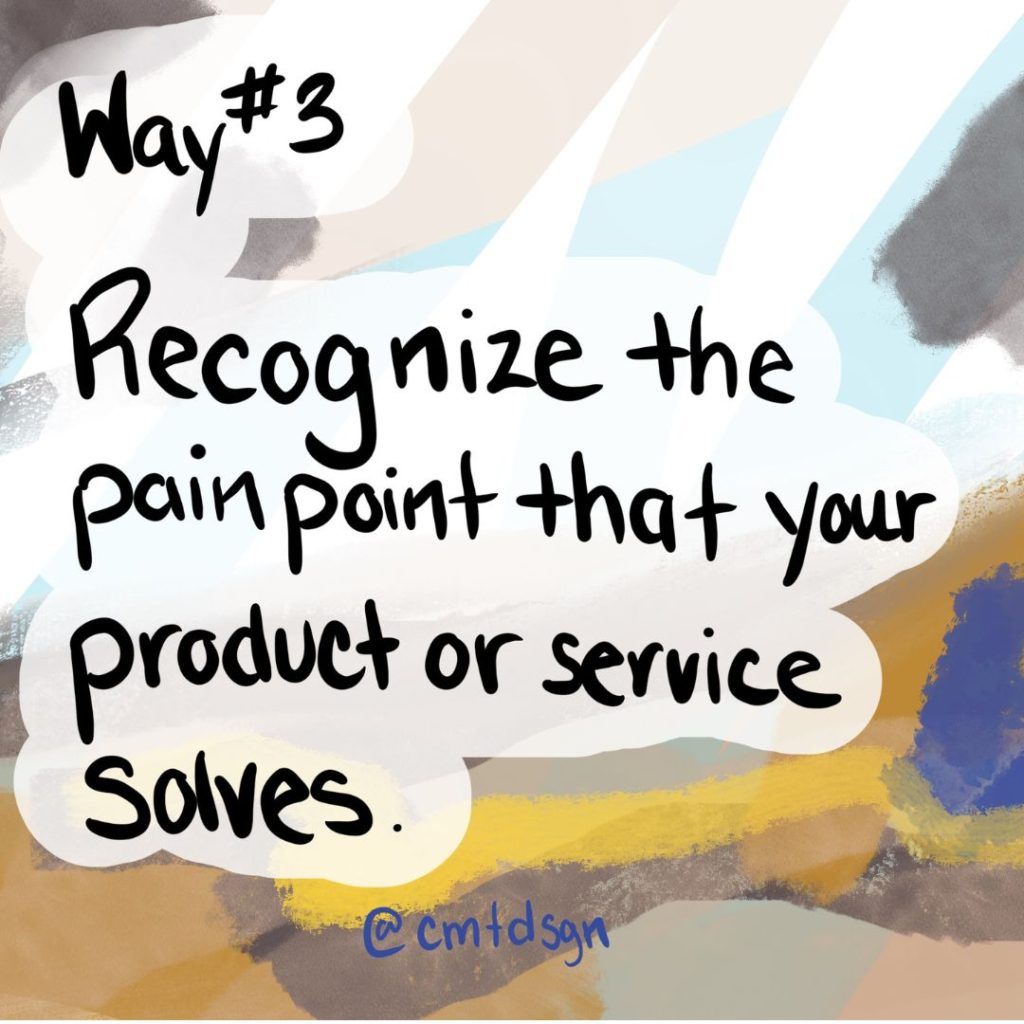
Way #3: Recognize the pain point that your product/ service solves.
Another way to stand out and find your value and proposition is to know your offer and what specific problem it solves. Recognize the main pain point and what your product or service solves because your ideal client wants to hear those significant keywords. Identify what specific pain point your ideal client is experiencing and how you solve that problem through your work. For example, as a graphic designer, the pain I solve is feeling overwhelmed and lost. My branding service is the solution I bring to clients resulting in clarity and direction. That’s exactly what art therapists need.
To understand the specific pain points that your ideal client would face is to take on a couple of free clients, you get deeper into what pain points they might be experiencing. Concluding which one you can solve the best because you can not solve every pain point. Solve one pain point to the best of your ability. When you complete the work with that client, get feedback and find out what your product or service solves. Utilize that and use it in your messaging and your positioning statement.
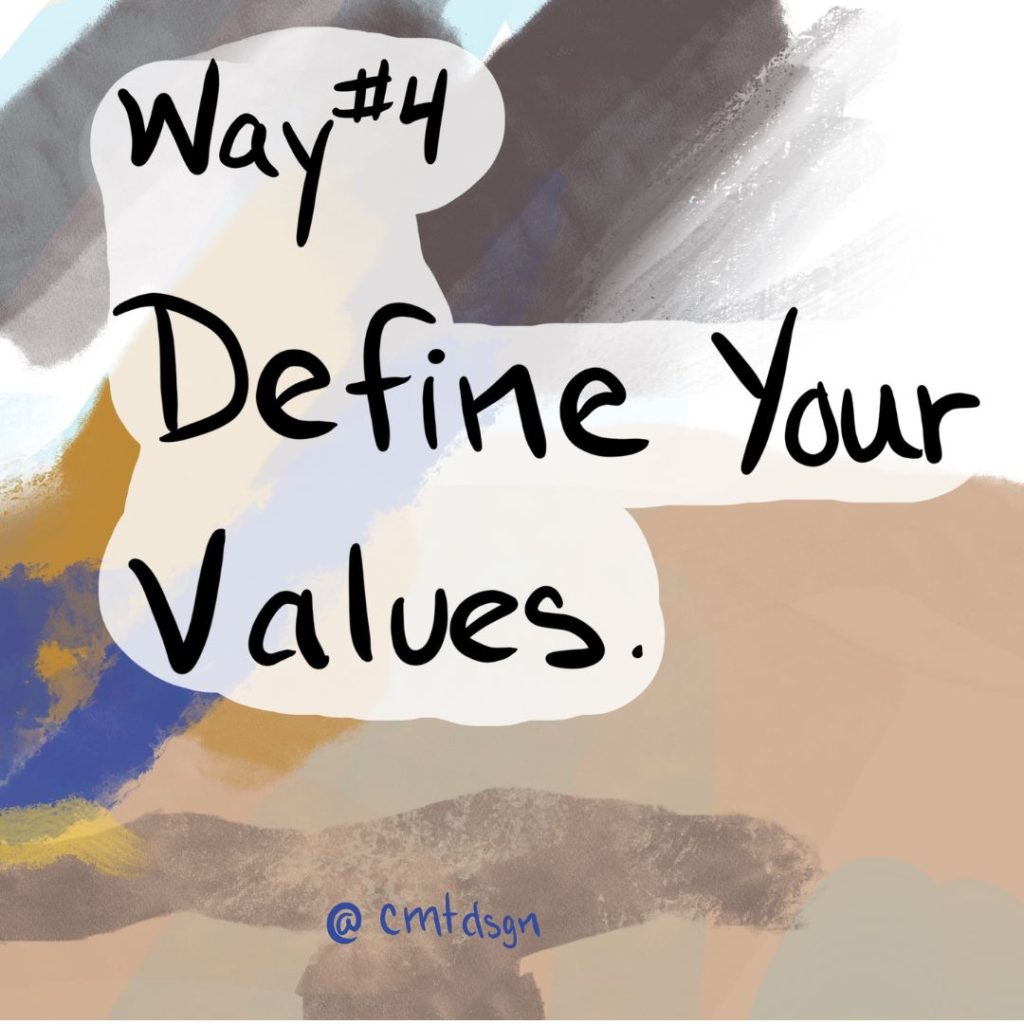
Way #4: Define your values
The way to set yourself apart and stand out as a brand would be to know what you stand for.
Tap into your values and beliefs because your ideal client has that at the top of their list when looking for art therapists.
The client looks for art therapists who believe in the same things to ensure they can trust you, knowing that is the type of culture you will bring.
You are responsible for acting on those values through the environment you create and how you deliver. The client wants to know you are the right person to deal with this problem.
For example, I am a graphic designer; I value empathy, structure, and imagination by showcasing them through my process, empathizing with the client by understanding their problem what they are trying to do, and meeting them where they are. Create a structured process to go through each phase smoothly. Prioritize imagination to help build out the story and concept to allow ourselves to dream, to explore, and experiment.
Keep things loose and playful in how I communicate with a client.
This is why defining your values is super important because people follow the same people that share the same beliefs and values.
If those values do not align, there will be a disconnection. You need at least one to align for commonality, relation, and trust because establishing a connection is the goal for anything to happen in your business. Share your values clearly in your positioning statement and communication people will understand you.
In conclusion, your value and proposition statement is essential, or you will blend into the crowd. To attract clients, you have to start small and find what you are the best at first and then grow slowly because this is what todays market is all about. The society is highly competitive, and everyone is trying to find their voice.
Tap into the ways of figuring out where you stand in the market:
- Identify your ideal client, that person that you work well with.
- Define what makes you different tap into your stories, traits, and strengths.
- Recognize the main pain point and problem.
- Know your values and beliefs.
Going through the points mentioned above, will allow you to do the deep work. This automatically sets yourself apart from your competitors. You will be the expert in your niche, coming from a place that is unique to you. This positions you to bring your strengths to the table, to stand out and attract the right clients.
